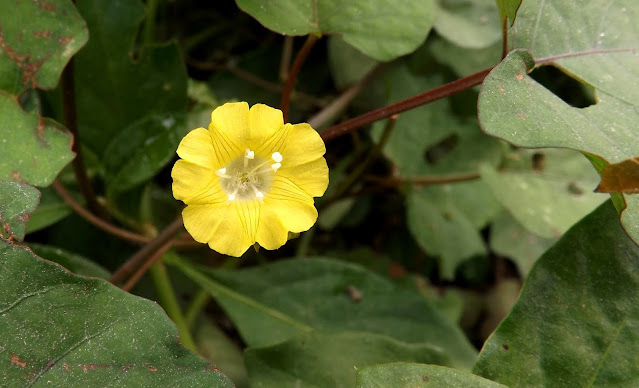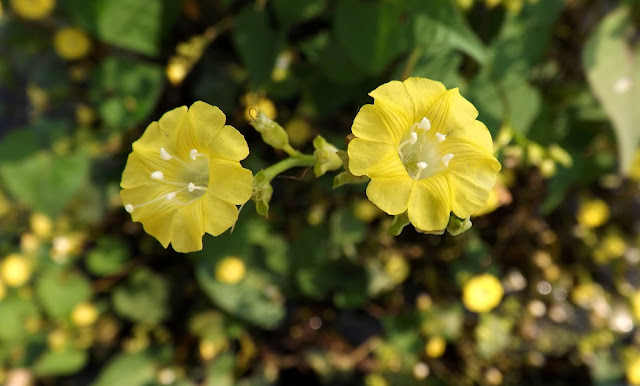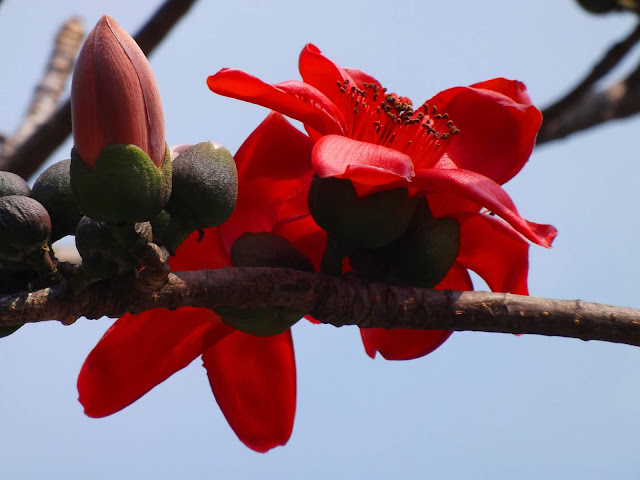Kaladana or Ivy Woodrose, Merremia hederacea
Kaladana or Ivy Woodrose (Merremia hederacea, family: Convolvulaceae) is an annual twinning climber or trailer with numerous branches, attaining a length of 2-3 m. The stem of the water-loving plant is thin, slender and glabrous. Young leaves as well as young shoots are reddish. Its young shoots act like tendrils and can climb up by the support of something. It can survive for some days insubmerged condition. It is found near waterbodies, on fallow lands and in ditches in Bangladseh. It is also found in the tropical and sub-tropical regions of Asia and Africa.
Other name: Komalota
The shape and size of the leaves vary. These can be heart-shaped, tri-lobed or multi-lobed; cordate at base, tip is elongated and usually blunt, 2-5 cm long, 1.5-4 cm in diameter. Veins and midribs of are reddish. Petiole is reddish and very long.
Flowers are in umbellate inflorescence, light yellow or white, tiny, tubular, single or clustered. Corolla 1 cm long, lobes 10. Stamens 5, filament is is much longer than stamens.
The inner part (lobe-dividing parts) of the corolla tube is marked with linear marks. Autumn is the flowering period of the plant.
Fruit is capsule, angular or somewhat round, wrinkled. Seeds are black. Its Bangla name 'Kaladana' is derived from its black-colored seeds. The propagation of the plant is caused by seeds and cuttings.
The plant is used in acute tonsillitis. Leaves are used to treat broken bones.
Synonyms : Convolvulus acetosellifolius, Convolvulus biflorus, Convolvulus chryseides, Convolvulus dentatus, Convolvulus denticulatus, Convolvulus flavus, Convolvulus lapathifolius, Convolvulus luteolus, Convolvulus obdentatus, Convolvulus obtusilobus, Convolvulus repens, Convolvulus rufescens, Convolvulus vahlii, Evolvulus hederaceus, Ipomoea acetosellifolia, Ipomoea chrysoides, Ipomoea chrysotricha var. boliviana, Ipomoea dentata, Ipomoea subtriflora, Lepistemon glaber, Lepistemon muricatum, Merremia chryseides, Merremia convolvulacea







6BE17862E9
ReplyDeletetakipçi satın al
m3u listesi
Coin Kazanma
Eti Mutlu Kutu Kodları
Viking Rise Hediye Kodu
393BBFD892
ReplyDeleteTakipçi Satın Al
Abone Satın Al
Tiktok Jeton Hilesi